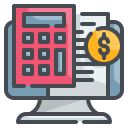Core Features That Truly Differentiate the Top Cloud Platforms
Strong contenders maintain reliable bank feeds, reduce duplicates with intelligent rules, and reconcile faster by matching transactions against invoices and bills automatically. Look for statement import options, clear exception handling, and multi-currency support that doesn’t force workarounds. When feeds are stable, month-end closes shrink, and confidence in your cash position rises noticeably.
Core Features That Truly Differentiate the Top Cloud Platforms
Top tools make invoices look professional, embed payment links, and nudge overdue customers with scheduled reminders. They handle partial payments, deposits, and credit notes without messy manual adjustments. When you compare platforms, consider how quickly a draft becomes an emailed invoice and how seamlessly payments reconcile—those minutes compound into real operational efficiency.
Core Features That Truly Differentiate the Top Cloud Platforms
Reporting should help you understand margins, spot cash flow risks, and validate growth plans. Compare how platforms manage custom columns, dimensions, and drill-down to original transactions. Scheduled delivery, shareable links, and board-ready formats matter. The best reports reduce spreadsheet gymnastics, enabling faster decisions and fewer late-night data cleanups.







